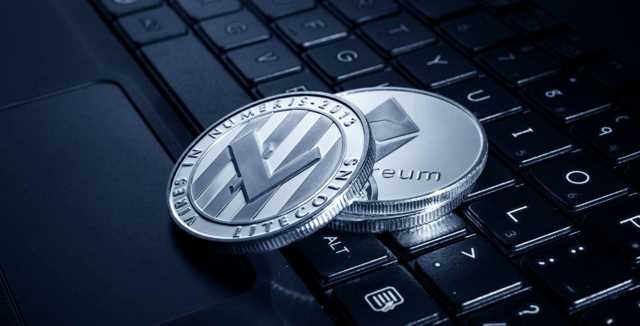After Bitcoin, Ethereum is likely the second most popular cryptocurrency. It was the first cryptocurrency to integrate “smart contracts” and has the second largest market valuation in the whole cryptocurrency market. Individual, decentralized, and self-executing agreements are programmed into the blockchain as smart contracts. Ethereum, created by Vitalik Buterin, went online with a test version in 2015. It includes the Ethereum virtual computer, or EVM, which can run smart contracts to represent financial arrangements like swaps, options contracts, and coupon-paying bonds. Ethereum may be used to execute wagers and bets, as well as to fulfill employment contracts and operate as a trustworthy escrow.
Ethereum mining, according to cryptocurrency professionals and analysts, is more rewarding than Bitcoin mining. Ethereum miners are reaping an average of $77 million per day, compared to $67 million for Bitcoin miners, according to the latest numbers. As a result, many industry professionals believe that mining Ethereum rather than Bitcoin is generally more profitable.
What exactly is mining?
Before we get into what Ethereum mining is, it’s important to understand what mining as a process entails. Mining is a term used to describe computationally hard labor that necessitates a significant amount of computer processing power and time. The miner is an investor who contributes energy, computer space, and time to sort through blocks in the mining process. When the mining process reaches the correct hash, they send their solutions to the issuers. For participating in the mining process, miners receive incentives in the form of portions of the transactions. Cryptocurrency miners are in charge of growing the market’s circulation of a specific cryptocurrency. The maximum number of coins that can be mined is set by each cryptocurrency. As a result, as rewards are lowered, so is the inflow of new coins.
What is Ethereum mining?
Ethereum mining entails more than simply raising the amount of Ether in circulation. It also entails safeguarding the Ethereum network while the blockchain is being created, verified, and ad-blocked. Ethereum mining consumes a lot of electricity and processing resources when compared to Bitcoin mining. The difficulty level varies dynamically, resulting in one block being produced every 12 seconds. The Proof-of-Work, or POW, system is used in the Ethereum mining process.
If you want suggestions for a good miner, here is one. The Bitmain Antminer S19 Pro ASIC miner uses the SHA-256 algorithm and has a hashing speed of 110Th/s while consuming 3250W of power. Check out the Bitmain antminer s19 pro for sale!
What exactly does it require?
Free mining software: Depending on the cryptocurrency, there is a variety of software that can be used. ‘Ethminer’ and ‘Minergate’ are two good examples. Each of these kinds of software are Windows, Linux, and Mac supported.
Temperature monitoring and overclocking software: This is quite useful because it aims to improve the performance of your GPU, allowing you to produce more hashes per second.
Membership in a mining pool: A mining pool is a collection of miners that are all working toward the same goal. They pool their resources in order to solve the cryptographic challenge and add a new transaction to the blockchain as quickly as possible. The crypto prize is subsequently distributed among the pool’s members.
Membership in an online currency exchange: This is crucial since it is here where you will trade or exchange your Ethereum, assuming that is your goal.
A cryptocurrency wallet: It is essential since you will need a secure location to store your tokens.
Selecting Mining Hardware: Experimenting with different GPU selections in the calculator will disclose a card with the best price/performance/power consumption (stated in MH/s per Currency Unit) combination. Keep in mind that AMD cards surpass NVidia cards when it comes to cryptocurrency mining. If the card doesn’t have at least 3 GB of RAM, it won’t be able to mine Ethereum appropriately. This is partly related to the Ethereum Proof of Work hashing process’s growing DAG file (directed acyclic graph).
How Long Does One Ethereum Take to Mine?
The amount of time it takes to mine Ethereum and collect Ether mining rewards is determined by the hashrate, electricity cost, and power consumption, as well as any payments made to a mining pool and/or hosting provider. In contrast to increases in mining difficulty targets and the general price behavior of the crypto market, these factors have a direct impact on earnings. Mining one ETH will take 51.8 days, according to the default calculations of this popular Ethereum mining calculator17.
Which method of mining is best for you?
The selection you make will be based on important aspects such as whether you want to buy a mining rig and how much money you want to put into it at first. It will be influenced by the following elements in particular:
- The sum of money you wish to invest
- Whether you choose to mine using a rig or not
- If you want to use a rig, what kind of rig do you have?
Ethereum mining is done in a variety of ways, including cloud mining and GPU mining. Mining using an ASIC is unreliable these days, while mining with a CPU isn’t cost-effective.
However, experts feel that using an Ethereum mining pool is one of the best ways to mine Ethereum. You can reduce the volatility of your Ethereum earnings by mining in a pool. This is accomplished by providing you with smaller but more frequent payouts rather than a big sum payment only after a block has been solved. Always strive to pick a mining pool with the lowest costs and the most stable terms.
Profit Calculation
Using an Ethereum mining calculator, you can get a fairly precise estimate of how much you’ll earn. Simply open your miner and verify your Mh/s to compute profits. You enter the cost of electricity and power consumption after accessing any of the calculators. It will fetch the average results based on the current value of 1 ETH.
Final Thoughts
As Ethereum mining complexity rises, coupled with a global shortage of GPUs, it becomes more difficult to find alternate ways to mine in order to keep costs down. Fortunately, pool mining Ethereum is one approach that enables you to do just that.



